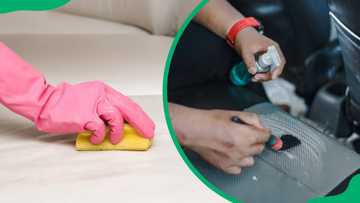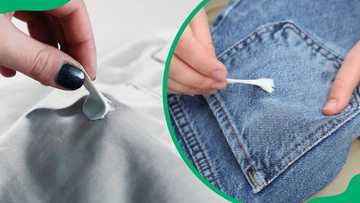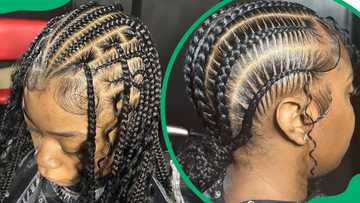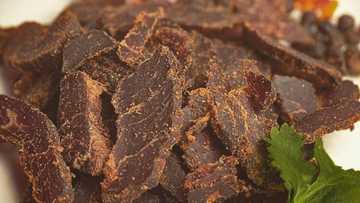How to get sticker residue off clothes easily: tried-and-tested tips
Sticker residue on clothes can cause a goosy mess as it attracts dirt and lint. The dirt creates an unsightly and frustrating mess on the fabric. When such stickers are left for a long time, they can be hard to remove as they can spread and smear across the fabric. Here are practical ways how to get sticker residue off clothes without damaging the fabric.
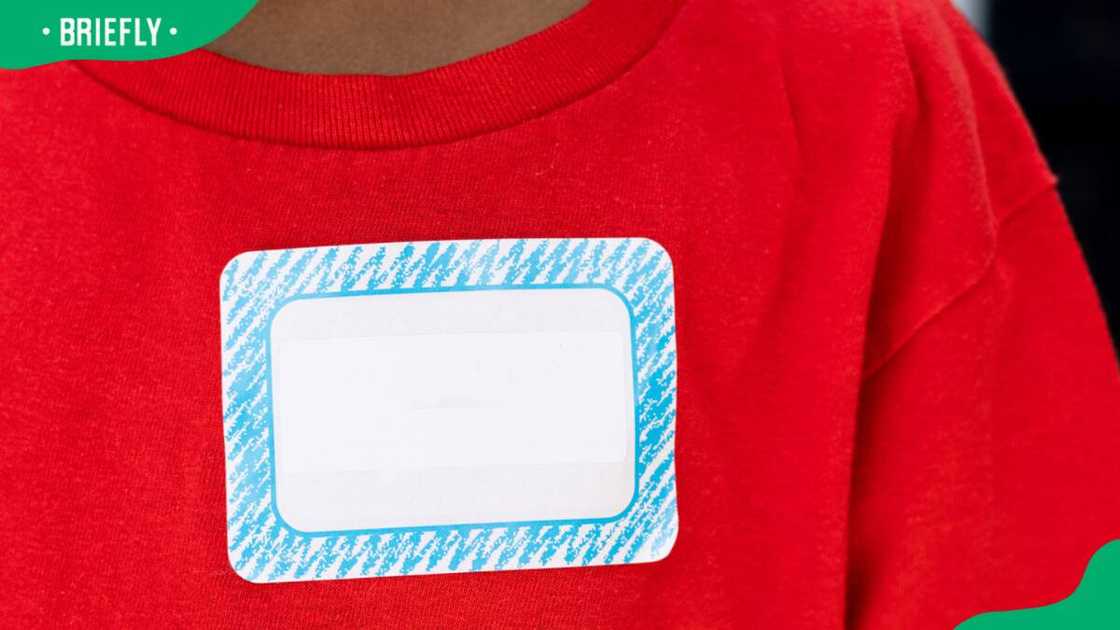
Source: Getty Images
TABLE OF CONTENTS
- How to get sticker residue off clothes
- 1. Acetone
- 2. Heat application (iron or hairdryer)
- 3. Distilled vinegar
- 4. Stick synthetic fabrics in the freezer
- 5. Rubbing alcohol
- 6. Stain-removing solvent
- 7. Soap and warm water
- How do you remove sticker residue from clothes after washing?
- How do you remove sticker residue from clothing?
- Does rubbing alcohol remove sticker residue from clothes?
- What is the best liquid to remove sticker residue?
- Can toothpaste remove sticker residue?
- What removes sticky sticker residue?
- Does Dawn soap remove sticker residue?
Learning how to get a sticker off a shirt, jeans, leggings, and other clothes will save you time, frustration, and the potential cost of replacing garments. While it may seem like the stubborn adhesive residues will be stuck on your favourite clothes forever, removing them is easy when the proper method is applied. Here is an overview of how to remove sticker residue from clothing.
How to get sticker residue off clothes
There are several tested ways to effectively remove sticker residue from your clothes while minimising damage to the fabric. Here are tested ways how to remove sticker residue from clothes.
1. Acetone
This method is applicable to cotton garments, denim, and polyester. Avoid using this technique on acetate, triacetate, or other delicate/sensitive fabrics. Another precautionary measure is to test on a small area first to check for colourfastness and fabric reaction. So, how is it done? Check the simple steps shared below.
- Place a piece of cardboard or a thick cloth inside the garment to prevent bleed-through.
- Dampen a cotton ball or cloth with acetone.
- Gently dab the residue with the acetone-soaked cotton ball. Avoid rubbing vigorously to prevent fabric damage.
- Use a plastic scraper or your fingernail to lift off the softened residue.
- Launder the garment immediately to remove any acetone traces and remaining residue.
2. Heat application (iron or hairdryer)
Heat application mainly involves using an iron or hairdryer. This technique is applicable to most fabrics. However, be cautious with delicate materials like silk or wool. You should avoid overheating to prevent fabric damage. Here is how to get it done.
Using a Hairdryer
- Lay the garment flat on a heat-resistant surface.
- Set the hairdryer to medium heat.
- Hold the hairdryer a few inches from the residue for 1-2 minutes.
- Gently peel off the softened residue.
- Wipe it with a damp cloth and wash it as usual.
Using an Iron
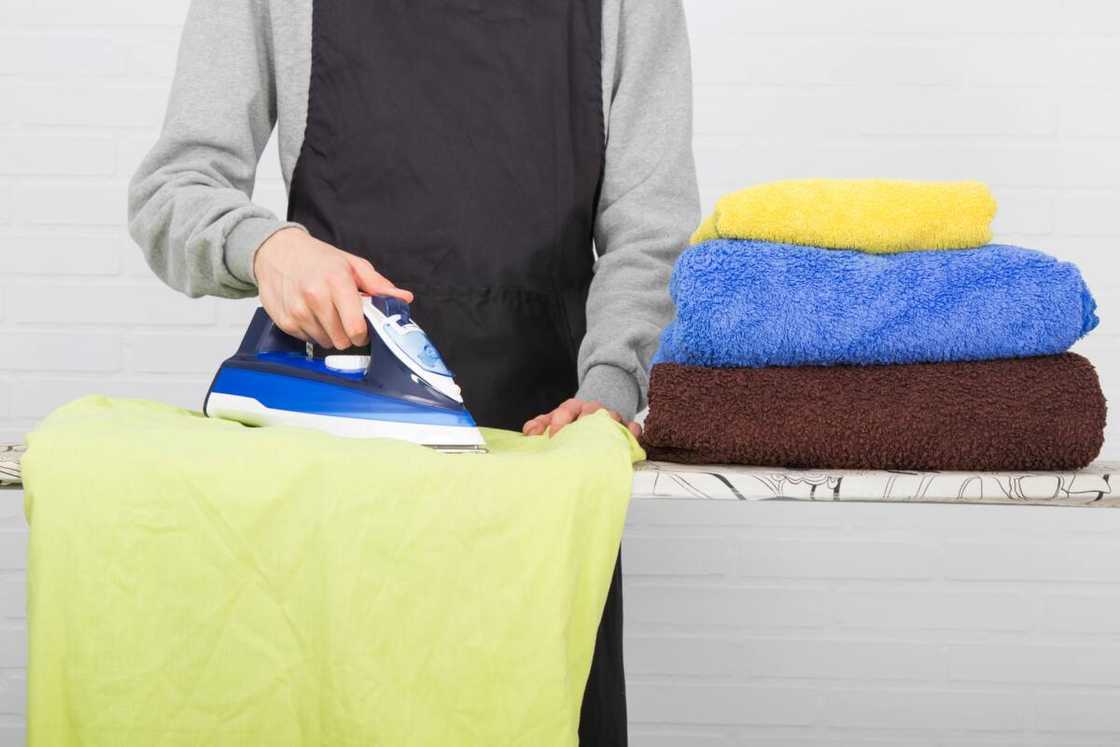
Source: Getty Images
- Lay the garment on an ironing board.
- Place a piece of baking paper or a thin cloth over the residue.
- Set the iron to a low to medium setting (no steam).
- Iron over the area for 1-2 minutes.
- Gently scrape off the softened residue.
- Wipe it with a damp cloth and wash it as usual.
3. Distilled vinegar
This method of removing sticker residues is applicable to most fabrics, including cotton and polyester. However, it is advisable to test on a small, inconspicuous area first to ensure no discolouration. To get it done, follow the stepwise instructions below.
- Warm a small amount of distilled vinegar in the microwave or on the stove (do not boil).
- Soak a cloth or sponge in the warm vinegar.
- Apply the vinegar-soaked cloth to the residue and let it sit for 5-10 minutes.
- Use the cloth to scrub the residue away gently.
- Rinse the area with water and wash the garment as usual.
4. Stick synthetic fabrics in the freezer
This method is applicable to synthetic fabrics like polyester, nylon, and spandex. However, you should first ensure the fabric is dry before placing it in the freezer.
- First, place the garment in a plastic bag to protect it from freezer smells.
- Put the bagged garment in the freezer for at least one hour.
- Take the garment out of the freezer and immediately try to peel off the sticker or residue, which should have hardened.
- Use a plastic scraper to remove any remaining residue.
- Wash the garment to remove any leftover bits.
5. Rubbing alcohol
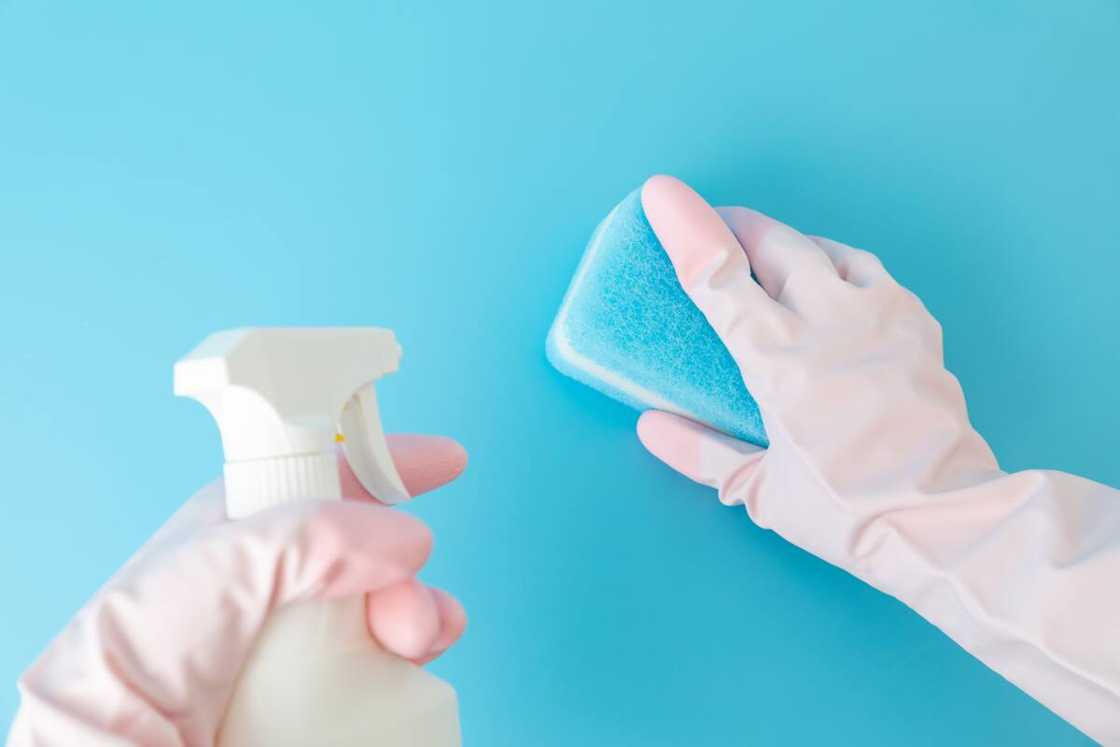
Source: Getty Images
How do you get sticker residue off polyester clothes? Try rubbing alcohol on a cotton ball and dab it over the sticky substance. Note that this method is applicable to most fabrics. Here is a stepwise approach to how to get it done on your favourite clothing.
- Place a piece of cardboard or thick cloth inside the garment.
- Dampen a cotton ball or sponge with rubbing alcohol.
- Gently dab the sticker residue with the alcohol-soaked cotton ball.
- Use a plastic scraper or your fingernail to remove the softened residue.
- Launder the garment immediately to remove any alcohol traces and remaining residue.
6. Stain-removing solvent
Strain-removing solvents can include laundry detergent, bleach, peroxide, dawn dish soap or a cleaning product with enzymes. It is applicable to most fabrics, but it is advisable to check the label for fabric-specific instructions. Here is how to get it done.
- Read and follow the instructions for stain-removing solvent.
- Apply the solvent to a cloth or directly onto the residue, as instructed.
- Gently rub or blot the area to work the solvent into the residue.
- Use a plastic scraper or your fingernail to remove the softened residue.
- Launder the garment immediately to remove any solvent traces and remaining residue.
7. Soap and warm water
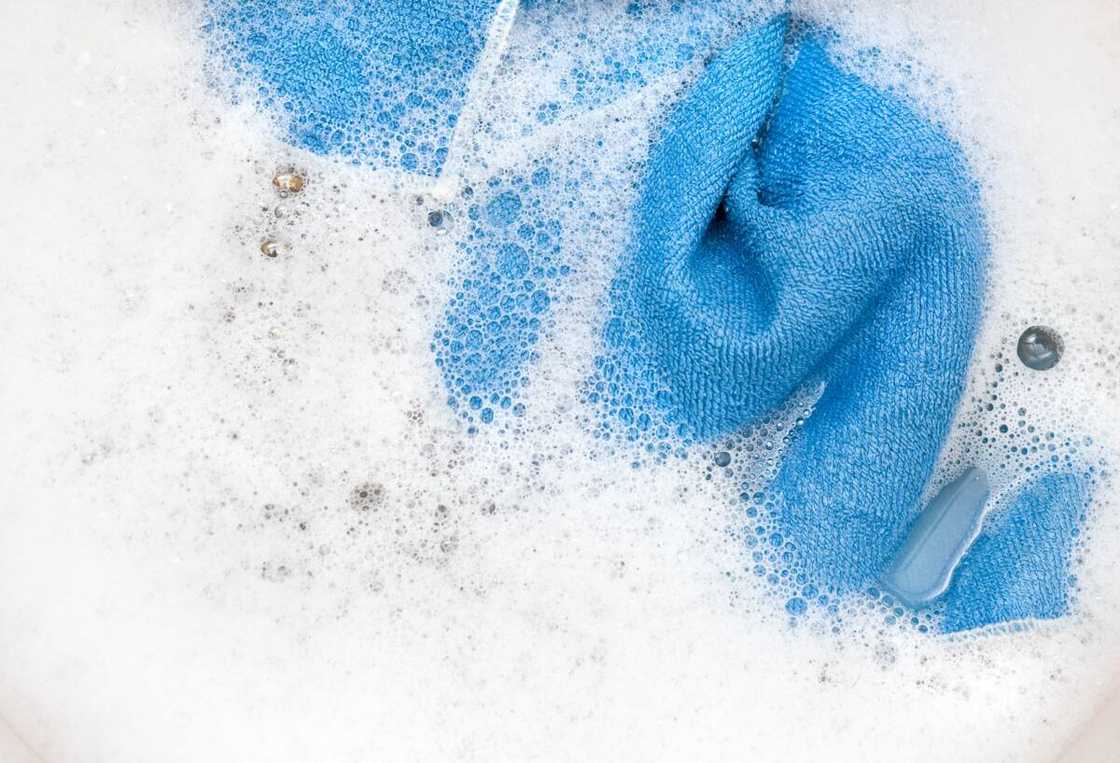
Source: Getty Images
Soap and warm water application is one of the techniques suitable for most fabrics, including delicate ones. Here is how to get it done.
- Mix a few drops of dish soap with warm water.
- Soak a cloth or sponge in the soapy water.
- Apply the soapy water to the residue and let it sit for a few minutes.
- Use a cloth or a soft brush to scrub the residue away.
- Rinse the area with water and wash the garment as usual.
How do you remove sticker residue from clothes after washing?
Some of the methods of removing sticker residue from clothes after washing include using an iron or hairdryer and using distilled vinegar to scrape it off.
How do you remove sticker residue from clothing?
Use methods like heat application (hairdryer or iron), rubbing alcohol, distilled vinegar, dish soap, or commercial adhesive removers to soften and peel off the residue.
Does rubbing alcohol remove sticker residue from clothes?
Rubbing alcohol can effectively remove sticker residue. Apply alcohol with a cotton ball, dab the residue, and gently scrape it off.
What is the best liquid to remove sticker residue?
Rubbing alcohol is considered one of the best liquids for removing sticker residue due to its effectiveness and availability. You can also try other liquids, including acetone (nail polish remover), distilled vinegar, and commercial adhesive removers.
Can toothpaste remove sticker residue?
Toothpaste (preferably the non-gel variety) can help remove sticker residue. Apply a small amount of toothpaste to the residue, gently scrub with a cloth or toothbrush, and then rinse with warm water. Wash the garment as usual afterwards.
What removes sticky sticker residue?
Heat application (hairdryer or iron), rubbing alcohol, distilled vinegar, acetone, dish soap, and commercial adhesive removers are effective at removing sticky residue.
Does Dawn soap remove sticker residue?
Dawn dish detergent has degreasing qualities that are also effective on adhesives. Dawn dish soap mixed with warm water can help remove sticker residue. Apply the soapy solution, let it sit, and gently scrub the area.
If you were pondering how to get sticker residue off clothes easily, these techniques shared above will do the magic for you. Remember that each method has its strengths, and the best choice depends on the fabric and the nature of the residue.
DISCLAIMER: This article is intended for general informational purposes only and does not address individual circumstances. It is not a substitute for professional advice or help and should not be relied on to make decisions of any kind. Any action you take upon the information presented in this article is strictly at your own risk and responsibility!
READ ALSO: How to measure hat size: a simple guide for a perfect fit
Briefly.co.za published an exciting post on how to measure hat size. With the right tools and knowledge, the process of measuring your head, interpreting hat sizes, and utilising a hat size chart should be a breeze.
Hat measurement is mainly done using a flexible measuring tape. Understanding how to measure hat size is essential for a comfortable and good-looking hat. Read on to discover the various ways of measuring the size of a hat.
Source: Briefly News



